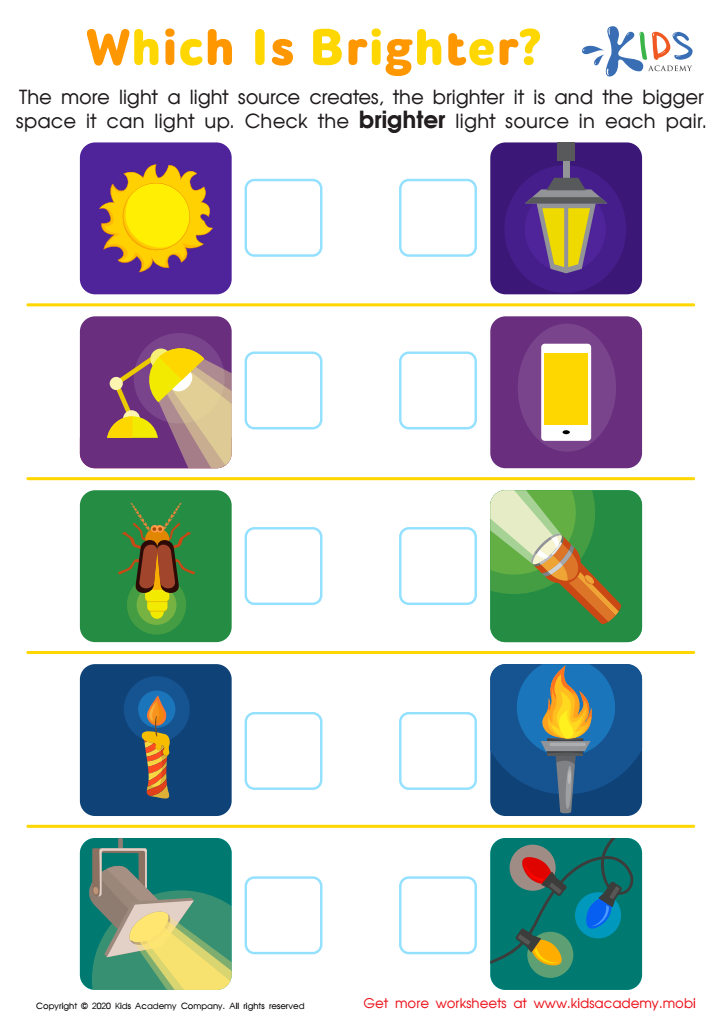Comparing intensities Worksheets for Kids
1 filtered results
-
From - To


Which Is Brighter? Worksheet
Question/Answer
How to test a Grade 1 student’s Comparing intensities skills?
To test a Grade 1 student's comparing intensities skills, use visual aids or objects with varying intensities like lights, sounds, or weights. Ask the student to order them from least to most intense or to identify which is more or less intense in direct comparisons. Ensure tasks are age-appropriate, clear, and involve tangible or easily observable differences.
What does the Comparing intensities skill mean when it comes to Grade 1 Physical Science learning?
In Grade 1 Physical Science, the "Comparing intensities" skill involves teaching students to observe and differentiate the strength or magnitude of physical phenomena. For example, they learn to distinguish between louder and softer sounds or brighter and dimmer lights. This foundational skill helps them understand variations in physical properties and prepares them for more complex scientific observations and analyses.
How does the mastery of the Comparing intensities skill affect a student's performance at an early age?
Mastery of the Comparing Intensities skill at an early age significantly improves a student’s ability to understand and evaluate differences in magnitude and importance. This foundational skill enhances critical thinking, mathematical reasoning, and the capacity to prioritize information, positively impacting their academic performance across subjects by enabling them to make more nuanced judgments and better-informed decisions.
 Assign to the classroom
Assign to the classroom












